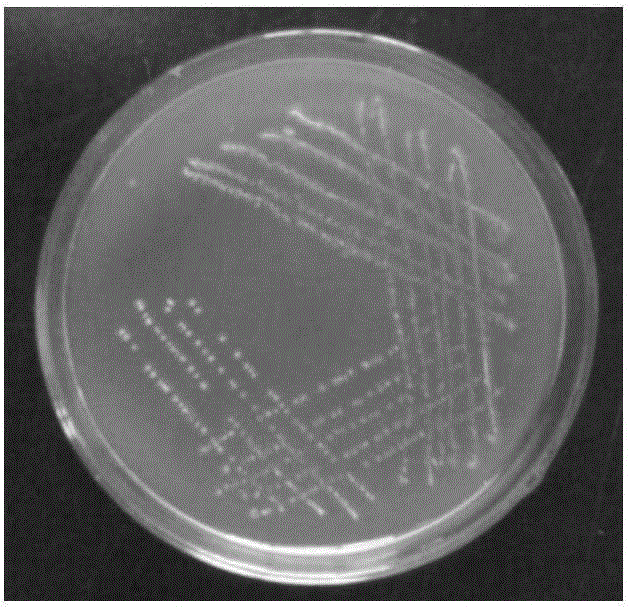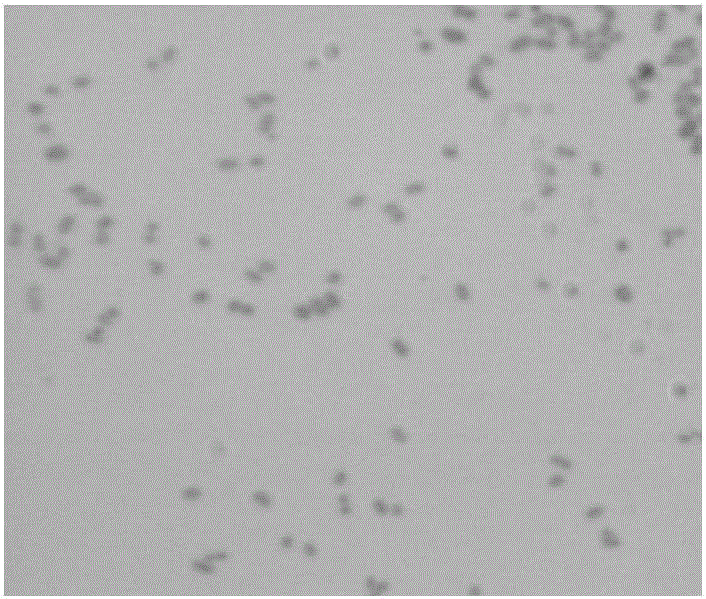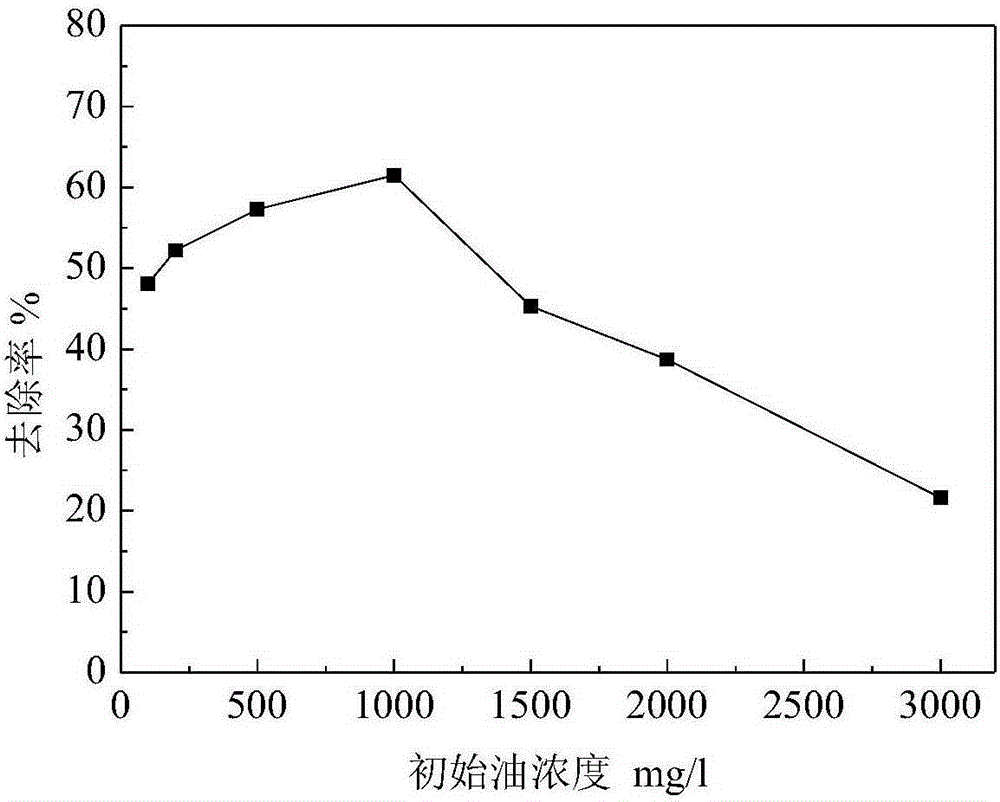Petroleum hydrocarbon degradation bacterium and application thereof
A technology for degrading bacteria and petroleum hydrocarbons, applied in the direction of bacteria, water/sludge/sewage treatment, biochemical equipment and methods, etc., can solve the problems of secondary pollution of chemical reagents, damage to soil structure, difficult to implement, etc., and achieve good degradation Effects, broad application prospects, and simple cultivation methods
- Summary
- Abstract
- Description
- Claims
- Application Information
AI Technical Summary
Problems solved by technology
Method used
Image
Examples
Embodiment 1
[0033] Example 1: Degradation effect of bacterial strains on petroleum hydrocarbons under different initial test oil concentrations
[0034] 1. Take the colony from the slant surface of the strain preservation medium stored at 4°C and spread it on the activation medium plate. After culturing at 30°C for 24-36 hours, pick a single colony and inoculate it into the seed liquid medium, 30°C, 200r / min Incubate on a shaker for 12 hours. OD 600 Measure the concentration of the bacterial suspension under the wavelength and dilute the bacterial suspension to 0.8, and use it as a seed solution.
[0035] 2. Prepare degradation medium with initial oil concentration of 100, 200, 500, 1000, 1500, 2000, 3000 mg / L respectively.
[0036] 3. Inoculate the seed liquid of the strain into the degradation medium with different oil concentrations according to the inoculation amount of 5%, and make three parallel samples for each concentration, and the medium without inoculation is used as a blank ...
Embodiment 2
[0038] Example 2: Degradation effect of bacterial strains on petroleum hydrocarbons in shake flasks under different salinities
[0039] 1. Take the colony from the slant surface of the strain preservation medium stored at 4°C and spread it on the activation medium plate. After culturing at 30°C for 24-36 hours, pick a single colony and inoculate it into the seed liquid medium, 30°C, 200r / min Incubate on a shaker for 12 hours. OD 600 Measure the concentration of the bacterial suspension under the wavelength and dilute the bacterial suspension to 0.8, and use it as a seed solution.
[0040] 2. Preparation of degradation medium with salt concentrations of 0.5%, 1.0%, 1.5%, 2.0%, 2.5%, and 3.0%, respectively, and oil concentration of 200 mg / L.
[0041] 3. Inoculate the seed solution of the strain into the degradation medium with different salinities according to the inoculum amount of 5%, and make three parallel samples for each salt concentration, and the medium without inocula...
PUM
 Login to View More
Login to View More Abstract
Description
Claims
Application Information
 Login to View More
Login to View More - R&D
- Intellectual Property
- Life Sciences
- Materials
- Tech Scout
- Unparalleled Data Quality
- Higher Quality Content
- 60% Fewer Hallucinations
Browse by: Latest US Patents, China's latest patents, Technical Efficacy Thesaurus, Application Domain, Technology Topic, Popular Technical Reports.
© 2025 PatSnap. All rights reserved.Legal|Privacy policy|Modern Slavery Act Transparency Statement|Sitemap|About US| Contact US: help@patsnap.com



